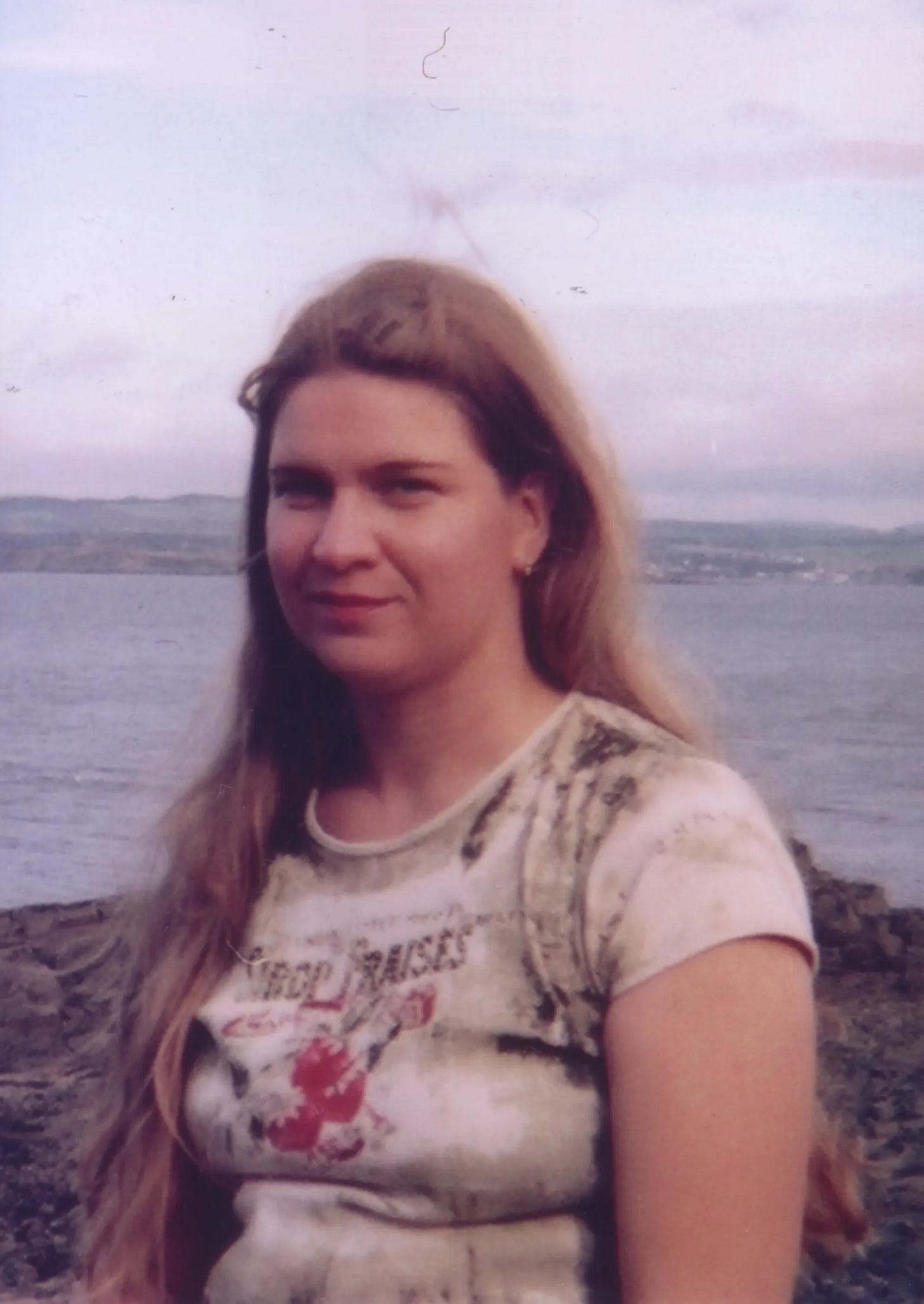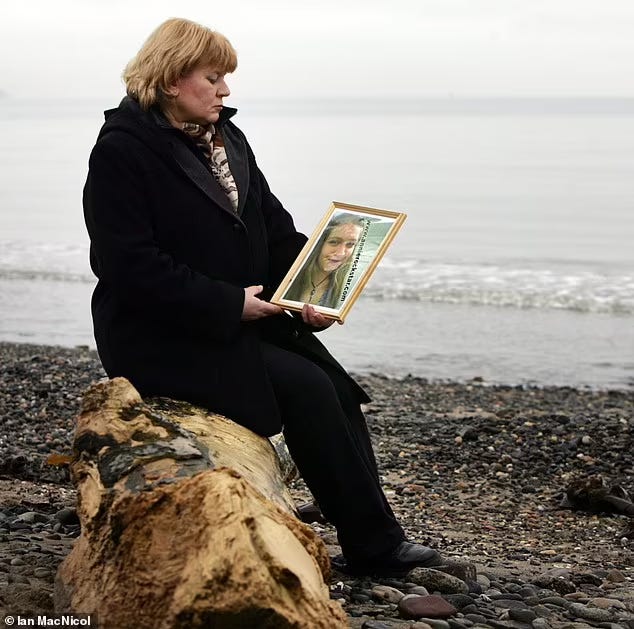"Classified As Secret": The Murky and Suspicious Death of Annie Borjesson
In December 2005, the body of 30-year-old Swedish native Annie Borjesson was found on a beach in Scotland. Quickly ruled a suicide by authorities, disturbing facts would soon call that into question
Background
On the morning of December 4, 2005, the body of 30-year-old Annie Borjesson was found face down and fully dressed on Prestwick beach in Scotland.
Investigators were quick-almost too quick-to rule the death a suicide. Despite the fact that Annie did not have a history of depression or mental health issues, the police seemed unable or unwilling to consider any other possibility.
When the Borjesson family began to investigate Annie’s death on their own, troubling information began to emerge, which may help to explain why the police were afraid to properly investigate the case.
Time in Scotland
By all accounts, Annie Borjesson loved the culture and rugged beauty of Scotland. The Swedish native had arrived in Edinburgh in 2004 and enrolled in English classes. Annie’s friends remember her as a lively and outgoing person who was also a talented singer and fitness enthusiast.
At the time of her death, she was working in a popular tourist area and was looking to obtain permanent residence in the country.
On December 3rd, the day before her body was found, Annie had left her apartment in Edinburgh and traveled to Scotland’s Prestwick Airport, intending to fly to Sweden to visit family for the upcoming holidays.
Among the items in her luggage were two library books she intended to return in Sweden. CCTV footage showed Annie leaving Prestwick International train station before entering the main airport terminal.
Then, about five minutes later, she is seen leaving the airport through the same way she entered.
The following morning, Annie’s body was discovered by a dog walker on nearby Prestwick beach, about a mile from the airport.
Suspicious Death
Annie’s body was found face down and fully clothed. Next to her was a bag containing her passport, wallet, clothes, library books, and other personal items.
The Scottish Crown Office, which investigated the case, immediately ruled Annie’s death a suicide, despite the fact that no post-mortem had been conducted. The Crown Office also declined to hold a Fatal Accident Inquiry (FAI), despite it being standard procedure in such cases.
The Scottish police also never mentioned bruising that was found on Annie’s neck and side. It was only after her body had been repatriated to Sweden that her family learned about the unexplained bruising.
The Scottish police have still refused to allow the autopsy photos to be released. Understandably, this did not sit right with Annie’s family as they did not believe she would have taken her life.
Missing Phone Calls
Things only grew more suspicious when the family was told that Annie had not made or received any texts or phone calls during the three days prior to her death. Her email history had also been deleted.
Annie’s family knew for a fact that they had spoken with her during that time. This led to a deepening mistrust between Annie’s family and the authorities. They were now fully convinced that they were being lied to and misled by police.
Mistaken Identity?
One possible explanation for Annie Borjesson’s strange death and the police’s reluctance to investigate it involves a case of mistaken identity,
At the time of her death in late 2005, the United States government was conducting its “war on terror,” and was receiving criticism for bypassing international laws against torture by conducting clandestine operations in foreign nations.
Reportedly, Prestwick airport was being used for transporting terror suspects for so-called rendition flights. It just so happened that an American journalist who was critical of these operations was named Kristina Borjesson.
Perhaps Annie Borjesson was mistaken for Kristina Borjesson. It could explain why her body was found so close to Prestwick airport, and it could also explain why the police were so secretive and seemingly uninterested in investigating Annie’s death.
Classified As Secret
After investigations from international news agencies such as Sky News and the BBC and continued pressure from Annie’s family, in 2020, the Swedish foreign ministry agreed to release documents containing communications with Scottish authorities.
However, much to the frustration of the Borjesson family and the public, much of the information has been heavily redacted and “classified as secret.”
They claim that disclosure of that information will “damage Sweden’s international relations or, in other ways, harm national interests.” According to Annie’s mother, “Even the cause of death has been hidden.”
Closing Thoughts
Sadly, for Annie Borjesson’s loved ones, the struggle for justice has been slow and met with resistance at every turn. Yet they remain hopeful.
As Annie’s mother stated, "There is a public interest now and we are the family, so they should really take that into consideration. We are still motivated to get Annie an inquest. That would force the Crown Office to sharpen up and put all the facts on the table. We are not afraid of that."
Sources:
Mulhern, Robert. “Annie Borjesson: Mystery death files classified as secret, says Sweden.” Sky News, 5 March 2020, https://news.sky.com/story/annie-borjesson-mystery-death-files-classified-as-secret-says-sweden-11947991
Mulhern, Robert. “What happened to Annie Börjesson? Inside the mystery 'suicide' - a Sky News podcast.” Sky News, 4 July 2023, https://news.sky.com/story/what-happened-to-annie-inside-the-mystery-suicide-of-annie-borjesson-11862449
Lampert, Nicole. “Was the body on the beach a CIA hit? That’s one of the questions posed by a new documentary about an 18-year-old mystery.” Daily Mail Australia, 1 July 2023, https://www.dailymail.co.uk/femail/article-12238553/Was-body-beach-CIA-hit-new-documentary-explores-18-year-old-mystery.html
Martin, Hazel. “How did Annie’s body end up on a Scottish beach?” BBC News, 30 June 2023, https://www.bbc.co.uk/news/uk-scotland-66053050












